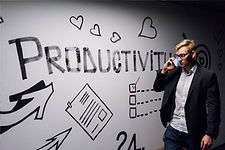Why is air travel considered one of the safest activities you can engage in?
Because pilots don’t have their own way of operating. Before every flight, even commercial pilots with 20 years of experience, rely heavily on checklists. They perform pre-flight tests of the same items in the exact same sequence every time. It’s their standard work.
Why is air travel considered one of the safest activities you can engage in?
Because pilots don’t have their own way of operating. Before every flight, even commercial pilots with 20 years of experience, rely heavily on checklists. They perform pre-flight tests of the same items in the exact same sequence every time. It’s their standard work.

Kaizen, Rapid Improvement Events
Kaizen, or Rapid Improvement Event (RIE), is a 2 – 5 day focused improvement workshop, during which a sequestered, cross-functional team designs and fully implements improvements to a defined process or work area.

As a leader, how often do you wonder why it takes so long to see results? Whether it’s making an improvement of some sort, making progress on a project, or making a decision, why does it seem to take so long?
If you’re a front-line supervisor, how different would your daily experience be if your teams received timely and error-free information and work from other areas?
And, if you’re a front-line employee, how would you like to play a significant role in designing and rolling out improvements to doing your work, rather than someone making changes without your input?
Kaizen, or Rapid Improvement Events (RIEs), focus on eliminating waste, improving productivity, and achieving sustained continual improvement in targeted activities and processes of an organization. This philosophy implies that small, incremental changes routinely applied and sustained over a long period result in significant improvements.
The Kaizen strategy aims to involve workers from multiple functions and levels in the organization in working together to address a problem or improve a process through a structured problem-solving approach like Plan-Do-Study-Adjust (PDSA).
The team uses analytical techniques, such as Value Stream Mapping for strategic value stream transformations or Metrics-Based Process Mapping for tactical process level improvement, to identify opportunities to eliminate waste in a targeted process or production area.
The team works to implement chosen improvements rapidly by end of the Kaizen event, typically focusing on solutions that do not involve large capital outlays. Periodic follow-up events aim to ensure that the improvements from the kaizen "blitz" are sustained over time.
How do organizations benefit from Kaizen Events?

Builds an Agile Organization

Develops Problem-Solving Experimentation Mindset
Efficient Work Processes, Increased Productivity

Improved Safety & Product Quality


Improved Communication & Cross-Functional Collaboration

Increased Employee Morale & Satisfaction
Improved Performance, KPI Targets Met

Builds a Continuous Improvement Culture

How We Can Help
To enable rapid and continuous improvement of work processes requires the organization to foster a culture where employees are empowered to identify and solve problems.
Organizations implementing kaizen-type improvement processes establish methods and ground rules that are effectively communicated across the organization and reinforced through training, which ensures all team members attending Kaizen events are well versed in the approach.
We assist the organization establish a continuous improvement culture by coaching their work teams facilitate Kaizen event for their respective work area.
Planning and Preparation
We start by identifying an appropriate target area for a rapid improvement event, which may include:
-
areas with "substantial work-in-progress"
-
an administrative process or production area where "significant bottlenecks or delays occur"
-
areas where everything is a "mess" and/or quality or performance does not meet customer expectations
-
areas that have a "significant market or financial impact", i.e. the most "value-added" activities

Once a suitable target area is selected, we help identify a more specific "waste elimination" problem within that area to focus on for the kaizen event. This is the specific problem that needs improvement, such as lead time reduction, quality improvement, production yield improvement, etc.
Once the problem area is chosen, we work with the department manager or team supervisor to assemble a cross-functional team of employees, which is balanced with experienced workers and fresh perspectives to supplement the team.
We work with the team to develop a Kaizen event project charter, which is an important communication tool for aligning stakeholders about why improvement is needed. It captures critical decisions that lead to successful rapid improvement events.
Implementation

In this phase, we coach the team in facilitation techniques and teach them how to start developing a clear understanding of the "current state" of the targeted process so that all team members have a common understanding of the problem they are working to solve.
During the Kaizen event, team members are assigned specific roles for research and analysis. The team collects information on the targeted process (e.g., changeover frequency; bottleneck source), adds detail to value stream maps of the process, and conducts time studies of relevant operations (e.g., takt time, lead-time).
As appropriate, we use Value Stream Mapping or Metrics-Based Process Mapping to define the current state, identify waste and non-value-adding elements in the targeted process.
Scientific problem-solving techniques like Plan-Do-Study-Adjust (PDSA) are used to find areas for improvement and ideas are tested on the shop floor before training and implementation of the most promising idea/solution.
Follow Up
A key part of a Kaizen event is the follow-up activity that aims to ensure that improvements are sustained, and not just temporary.
At 30, 60, 90 days following the initial Kaizen event, we ask the team members to track key performance measures (KPIs) to assess performance and identify follow-up modifications that may be necessary to sustain the improvements.

